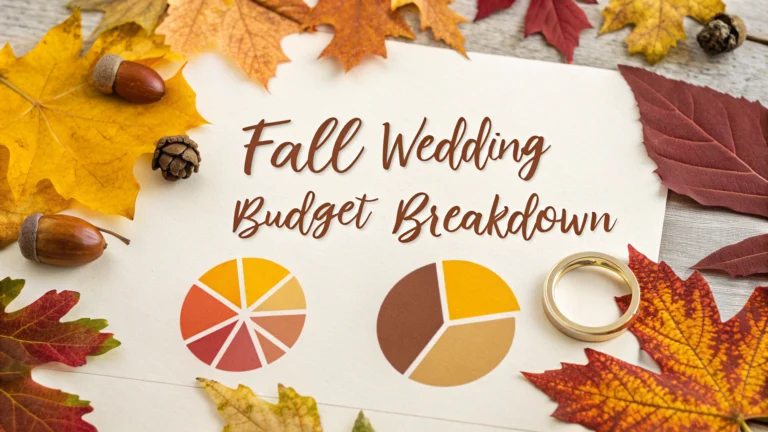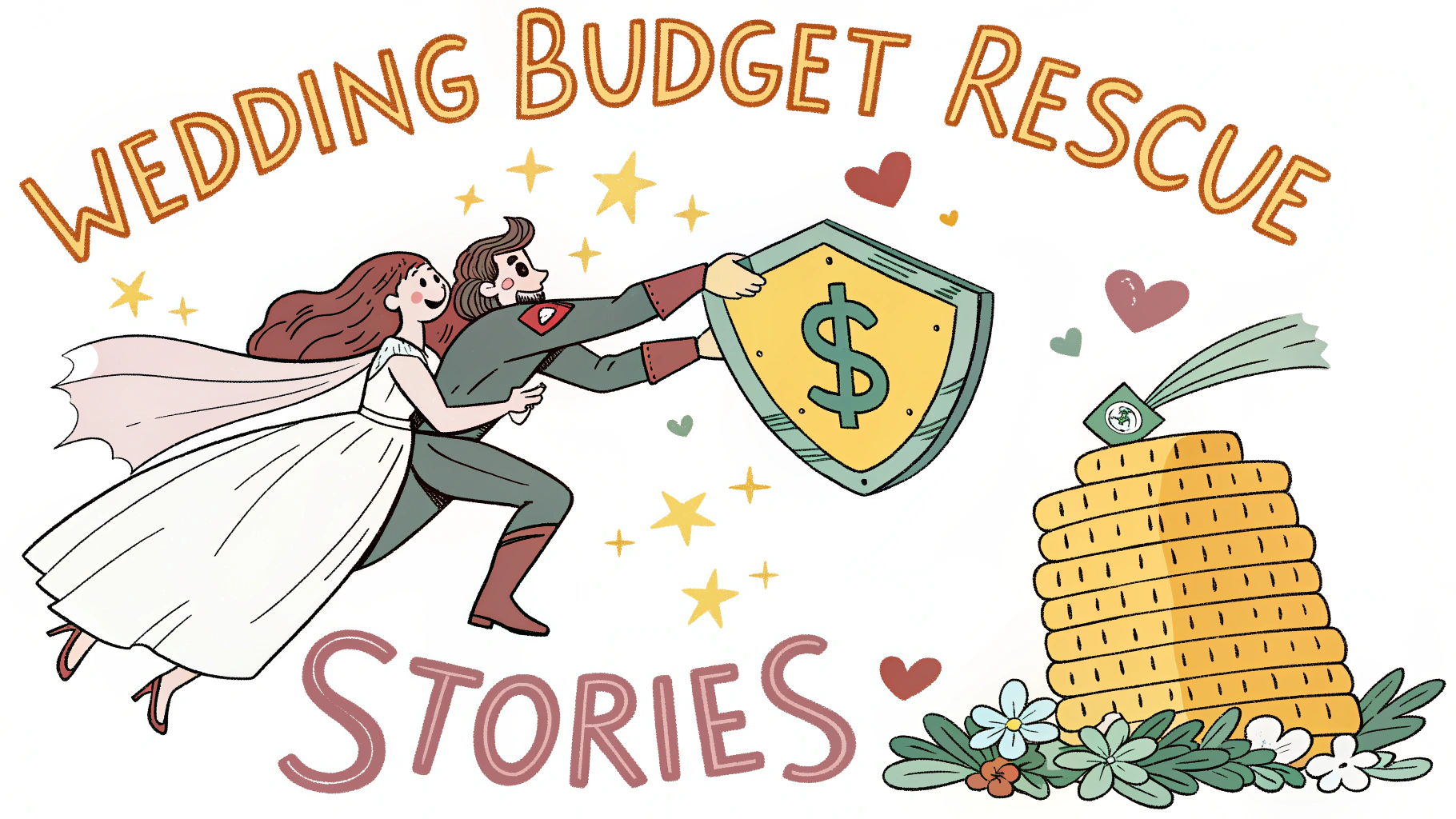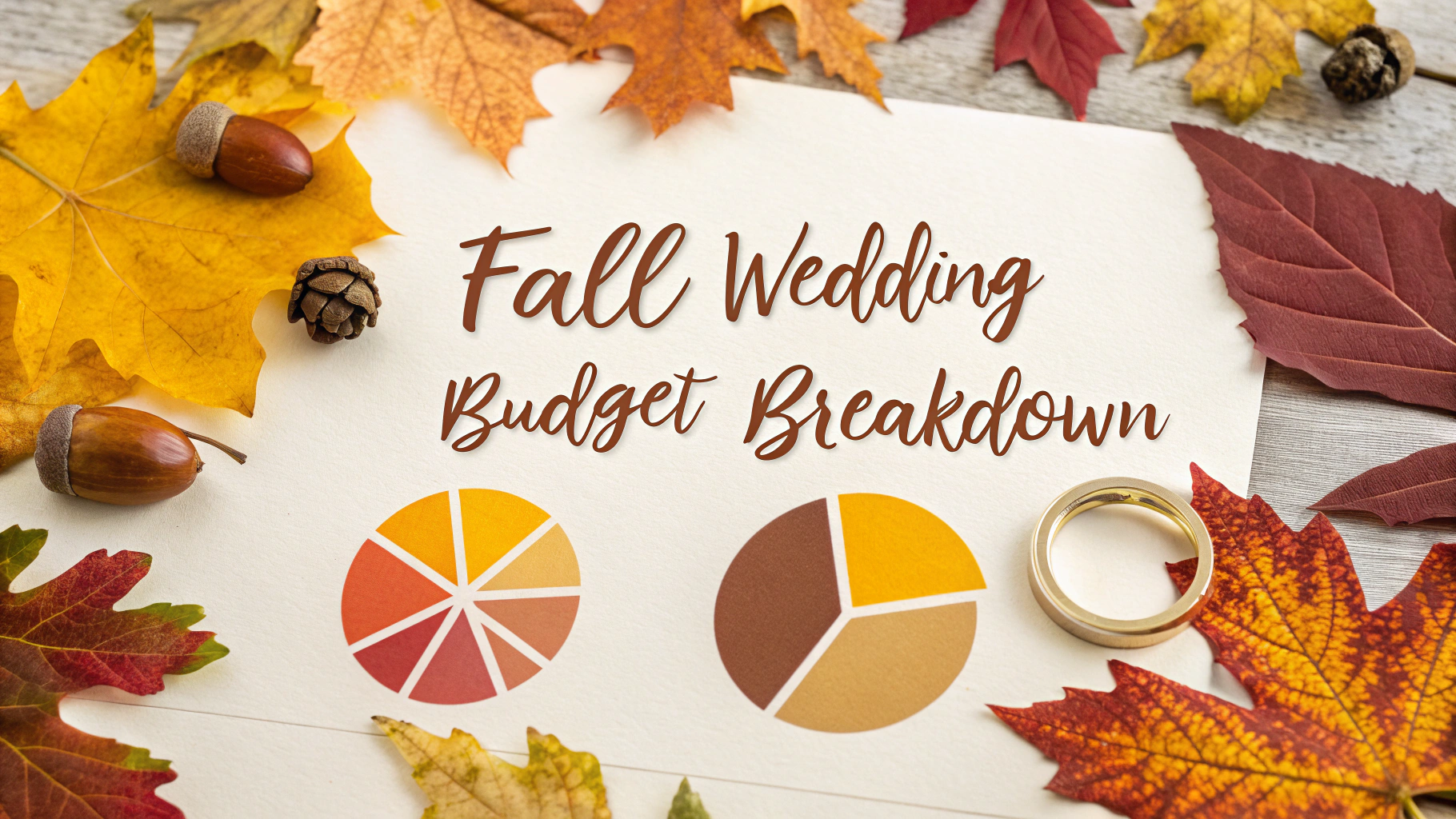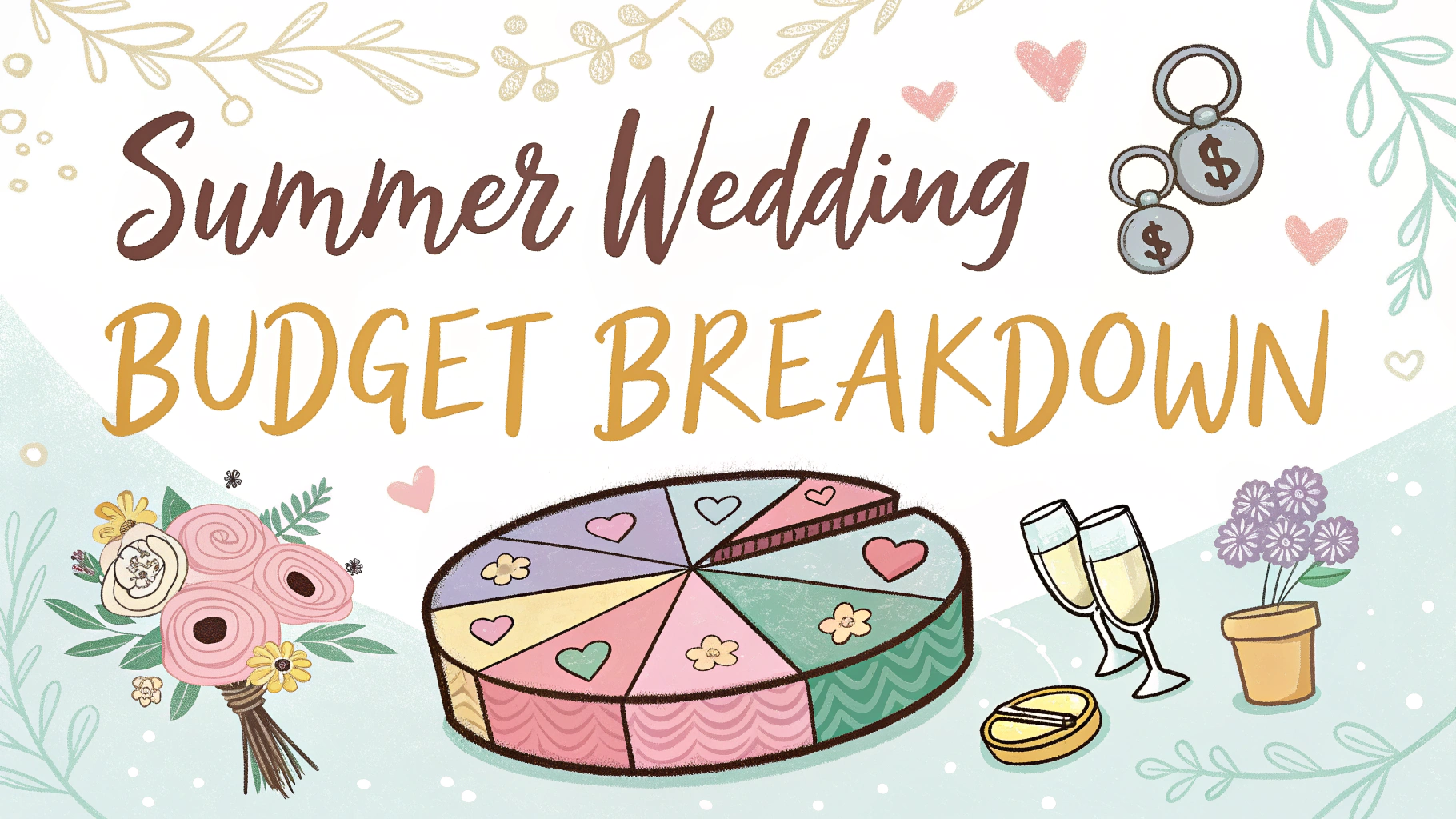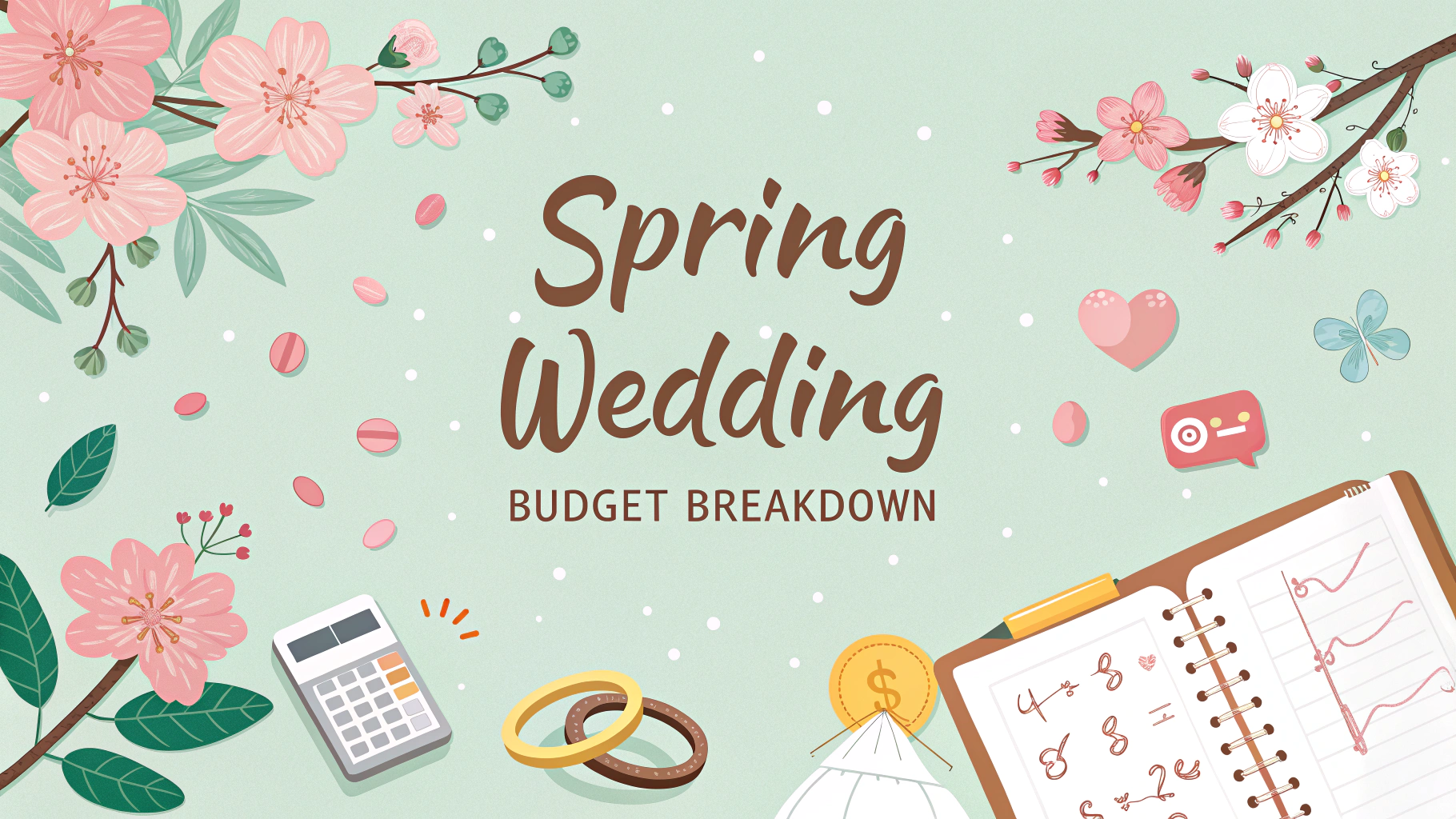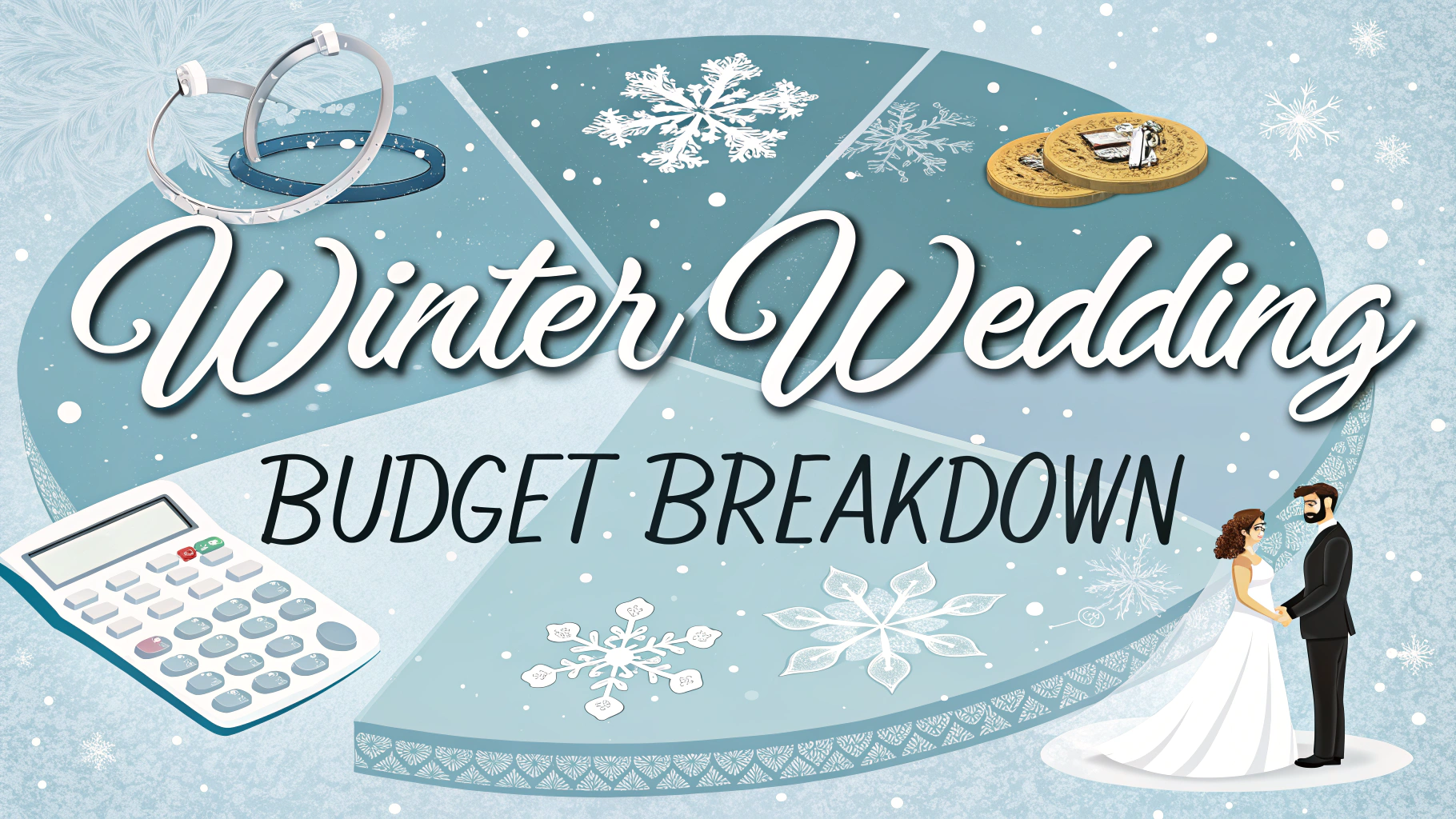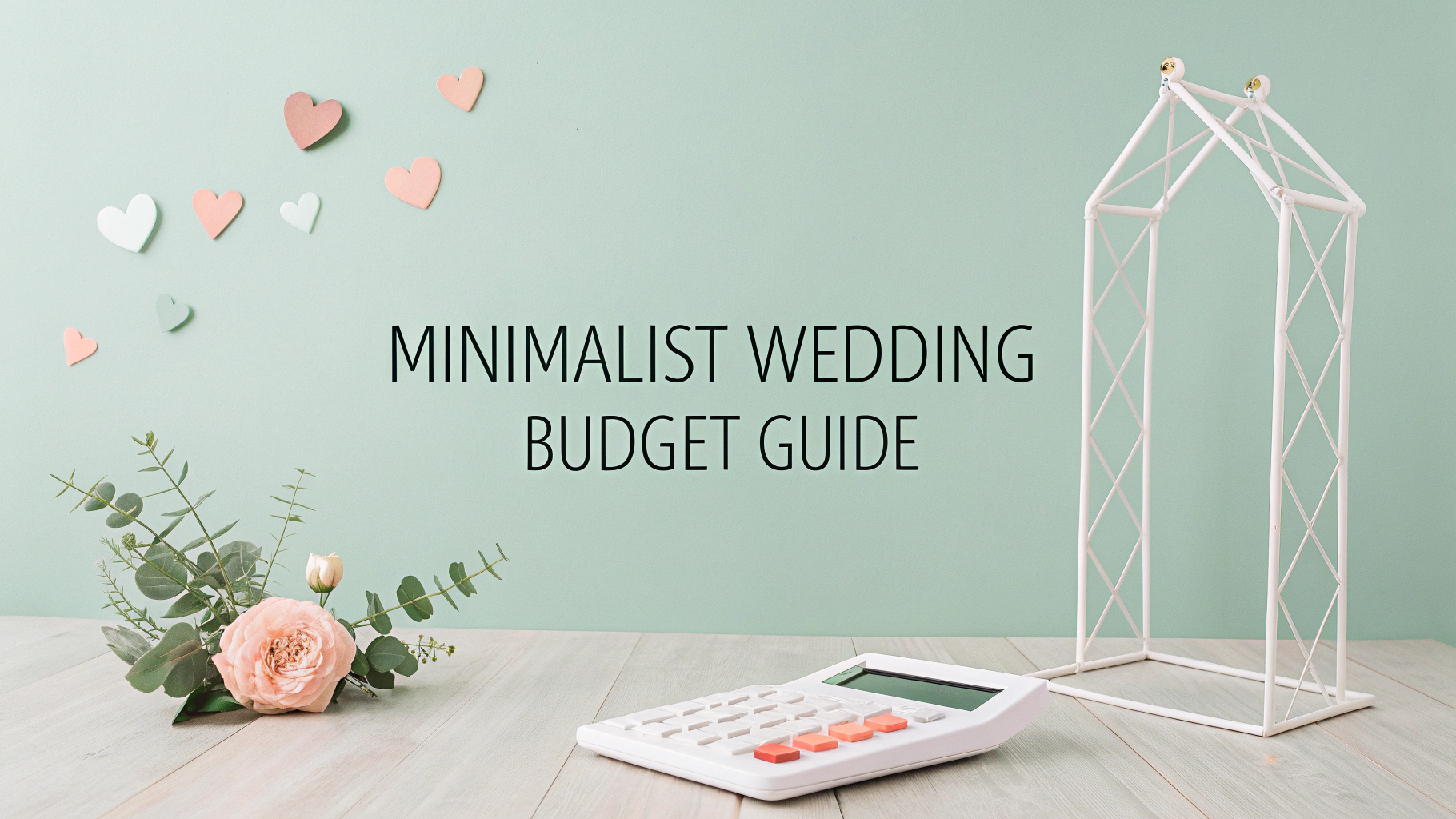Creating a budget for your fall wedding helps you track expenses and allocate funds wisely across different categories.
Average Fall Wedding Costs (US)
| Item | Cost Range |
|---|---|
| Venue | $5,000 – $15,000 |
| Catering | $8,000 – $12,000 |
| Photography | $2,000 – $5,000 |
| Attire | $1,500 – $3,000 |
| Flowers | $1,500 – $3,500 |
Fall Wedding Money-Saving Tips
- Book your venue during off-peak months (September-November typically offers better rates)
- Use seasonal flowers like dahlias, chrysanthemums, and sunflowers
- Consider Friday evening or Sunday afternoon ceremonies
- Incorporate natural fall decorations like pumpkins, leaves, and branches
- Choose an all-inclusive venue to bundle services
Budget Breakdown Percentages
- Reception (venue, food, drinks): 40-50%
- Ceremony: 5-10%
- Attire: 8-10%
- Photography/Videography: 10-12%
- Flowers/Decor: 8-10%
- Entertainment: 5-10%
- Invitations/Stationery: 2-3%
- Transportation: 2-3%
- Wedding Rings: 2-3%
- Misc/Emergency Fund: 5-10%
Hidden Costs to Consider
- Wedding dress alterations ($500-800)
- Hair and makeup trials ($150-300)
- Vendor meals ($30-80 per person)
- Marriage license fees ($25-100)
- Gratuities (15-20% for most services)
Track all expenses using a dedicated spreadsheet or wedding planning app like The Knot or WeddingWire.
Cost-Cutting Strategies
- Limit guest count – each guest costs $100-$300 on average
- Choose seasonal menu options
- DIY centerpieces and decorations
- Recruit talented friends/family for services like music or photography
- Consider artificial flowers mixed with real ones
- Skip traditional favors or choose edible options
Contact local wedding planners through Wedding Planners Association for professional budget management assistance.
Prioritizing Your Expenses
- Identify 3-4 most important elements for your celebration
- Allocate higher percentages of budget to priority items
- Be willing to compromise on lower-priority elements
- Consider which elements guests will remember most
- Factor in must-haves vs nice-to-haves
Timeline-Based Budgeting
- 12 months: Book major vendors requiring deposits
- 9 months: Secure attire and begin alterations
- 6 months: Order invitations and decorations
- 3 months: Final payments planning
- 1 month: Emergency fund allocation
Payment Schedule Tips
- Request payment schedules from all vendors upfront
- Space out major payments across planning timeline
- Keep 10% of budget in reserve until final month
- Use credit cards with wedding-related rewards
Conclusion
Successful fall wedding budgeting requires careful planning, strategic timing, and smart prioritization. Focus on:
- Taking advantage of seasonal savings opportunities
- Maintaining detailed expense tracking
- Building in flexibility for unexpected costs
- Balancing must-haves with nice-to-haves
- Creating realistic payment timelines
Remember to document all expenses, keep receipts, and regularly review your budget against actual spending. Consider working with a professional planner for complex budgets or large-scale events.
FAQs
- What is the average cost of a fall wedding in the United States?
The average cost of a fall wedding in the United States ranges from $20,000 to $30,000, with regional variations. Fall weddings can be slightly less expensive than peak summer weddings due to vendor availability. - What percentage of the wedding budget should be allocated to the venue?
The venue typically consumes 40-50% of the total wedding budget, including rental fees, catering, and basic decorations. For fall weddings, indoor-outdoor venues are popular choices to accommodate weather variations. - How much should couples set aside for fall-specific decorations?
Couples should allocate 8-10% of their total budget for decorations. Fall-specific items like pumpkins, autumn florals, and seasonal accents typically cost between $1,000-$3,000, depending on the scale. - What are the cost-saving benefits of having a fall wedding?
Fall weddings often offer reduced rates on venues and vendors after the peak summer season, with potential savings of 15-30%. Additionally, seasonal flowers and decorations can be more cost-effective. - How should couples budget for weather contingency plans in fall?
Set aside 5-10% of the total budget for weather contingencies, including tent rentals, heaters, or indoor backup locations, which typically cost between $500-$2,000 depending on the size of the wedding. - What is the recommended budget breakdown for fall wedding catering?
Catering should account for 25-30% of the total budget, including seasonal menu items, beverages, and service staff. Per-person costs typically range from $65-$150. - How much should be budgeted for photography in a fall wedding?
Photography typically requires 10-12% of the total budget, ranging from $2,000-$5,000, including engagement photos and additional lighting equipment for earlier sunsets in fall. - What percentage should be allocated to fall wedding attire and accessories?
Wedding attire and accessories should account for 8-10% of the budget, including seasonal considerations like wraps or jackets for cooler temperatures, typically totaling $1,500-$3,000. - How much should couples reserve for fall wedding transportation?
Transportation costs typically consume 2-3% of the budget, ranging from $400-$1,500, including weather considerations and earlier sunset times affecting scheduling. - What is an appropriate emergency fund percentage for a fall wedding?
Reserve 10-15% of your total budget as an emergency fund for unexpected expenses, seasonal price fluctuations, or last-minute weather-related changes.
